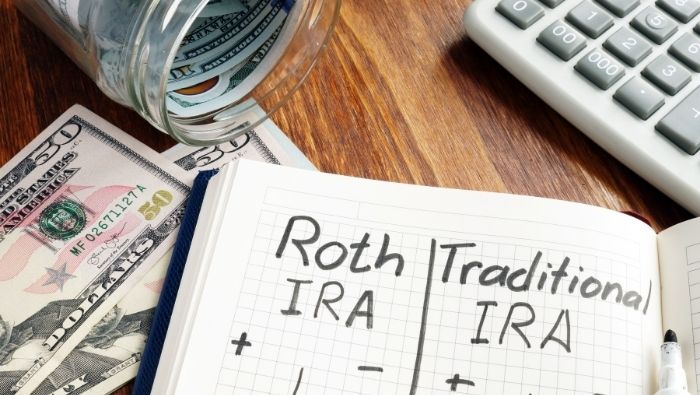How To Choose Between a Regular and Roth IRA
by Rick Kahler

Not sure if a regular or Roth IRA would be better for your finances? It’s mostly a question about taxes. Here’s what you need to consider.
When saving money for retirement, taxes are not your friend. Their impact, even for those in lower tax brackets, can significantly reduce one’s retirement income.
One of the better vehicles Congress created to help people save money that can grow tax-free is the Roth IRA. Unlike a traditional IRA, there is no current tax deduction for funds contributed to a Roth, but the funds are not taxed when withdrawn.
How do you know when to use a traditional IRA and when to use a Roth? The primary strategy is to pay the tax rate when it is the lowest. For example, if your income tax bracket is higher today than it will be when you need to withdraw earnings in retirement, you want to use a traditional IRA. That results in you avoiding paying any taxes at your high rate today and paying the lower tax rate when you withdraw the funds.
Conversely, if you are in a low tax bracket today and will be in a higher tax bracket when you withdraw the funds, the clear choice is to contribute to a Roth account and pay the lower taxes today because there will be no taxes due at all when you withdraw the money.
You may wonder how this scenario could happen. Doesn’t everyone slip into a lower tax bracket when they no longer have earned income from a job? Not necessarily.
Income in retirement could go up for many reasons: income from multiple pensions, marrying someone in a higher income bracket, receiving an inheritance, or selling appreciated investments. Another scenario is when a job change or cutting back work hours reduces someone’s earnings in pre-retirement years to less than their retirement income will be.
You deserve a comfortable retirement.
A trickier question is what to do if you don’t expect to see your tax bracket change. In this case, it depends on when you expect to start withdrawing a regular retirement income from your IRA. This scenario favors a Roth if you are very young or if you can reasonably predict you won’t need income from the Roth and can pass on the tax-free withdrawals to your heirs.
The withdrawal requirements on IRAs also can tilt the decision toward a Roth. Unlike traditional IRAs, Roths have no requirement to make annual distributions when you reach age 73. The one requirement you must meet before withdrawing tax-free from a Roth is that it has been opened for more than five years. A good strategy to consider, according to Michael Kitces, editor of the Kitces Report, is to open a Roth early with a minimal amount, like $100, even if you don’t intend to make immediate contributions. This starts the time clock ticking to meet the five-year rule. Kitces notes that the five-year rule only needs to be satisfied once per taxpayer to cover multiple Roth IRAs. He also recommends investing Roth assets in whatever has the highest expected return over time and is the least tax efficient.
Reviewed November 2023
About the Author
Rick Kahler, MSFP, ChFC, CFP, is a fee-only financial planner and author. Find more information at KahlerFinancial.com. Contact him at Rick@KahlerFinancial.com.
Sign me up for a comfortable retirement!
Sign me up for a comfortable retirement!
Popular Articles
- Comparing Retirement Housing Options
- How We Retired With Almost No Savings
- How Retirees Can Live on a Tight Budget
- 9 Things You Need to Do Before You Retire
- What You Need to Know About Long Term Care Insurance Before You Retire
- You Didn’t Save Enough for Retirement and You’re 55+
- Could Debt Derail Your Retirement? A Checklist
- Your Emergency Fund In Retirement: A Comprehensive Guide
- Managing Your 401k In Your 50s

